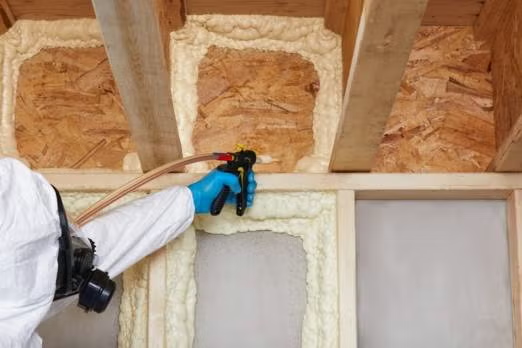Sustainability Challenge:
Building sealant and insulation spray polyurethane foam products traditionally have relied on certain hydrofluorocarbon (HFC) technologies as blowing agents that are considered potent greenhouse gases.
Chemistry Solution:
New advances in low-pressure spray polyurethane foam technology by DuPont use hydrofluoroolefin (HFO) blowing agents combined with CO2 to deliver significant GHG emission reductions while enhancing performance of building insulation and sealant products.
Sustainability Benefit:
The combination of HFOs with CO2 delivers a Global Warming Potential (GWP) of the blowing agent package used in low-pressure spray PU foam sealants and insulation that is reduced by more than 99 percent compared to current formulations, leading to a significant reduction in GHG emissions across the product’s lifecycle.
As society focuses on driving climate action in the near term through bolder greenhouse gas (GHG) emission reduction targets, and the building industry works to develop products with lower embodied carbon while continuing to address operational carbon through building energy efficiency, there is a demand for product solutions to help meet those goals. Insulation and sealant products are a critical component in constructing buildings that can help conserve energy and reduce carbon emissions.
While many polyurethane (PU) spray foam sealant and insulation products have traditionally relied on hydrofluorocarbon (HFC)-based blowing and frothing agents to dispense spray foam materials, certain HFCs are considered to be potent greenhouse gases.

Newer hydrofluoroolefin (HFO) blowing agents generally have a much lower Global Warming Potential (GWP) and have been proposed as reduced-GHG replacements. However, shifting use of blowing agents could potentially impact the long-term performance of sealants and insulation, creating a challenge for application of spray PU foam in building products.
To address this challenge, DuPont reformulated its Froth-PakTM Spray Foam, low-pressure two-component PU products, which help achieve reduced GHG emissions while maintaining product performance. This is made possible by pairing the new liquid HFO with carbon dioxide (CO2), which reduces the GWP of the blowing agent package used in the product from approximately 1,300 kilograms of CO2-equivalent per kilogram of blowing agent, to less than 10 – a reduction of more than 99 percent. DuPont’s annual environmental impact from this blowing agent change is estimated at one million tons of CO2-equivalent emissions per year of production, equivalent to avoiding the emissions from roughly 200,000 cars driven each year.1
These products also are created to be durable and last the lifetime of the building, potentially extending energy savings for periods of 50 years or more, while concurrently improving the holistic building structure to help prevent moisture intrusion, improve indoor air quality and create a more comfortable space for building occupants.
Further, DuPont is sourcing the CO2 used in Froth-PakTM Spray Foams from an ethanol by-product source, and produces the Froth-Pak™ Spray Foam products with 100 percent renewable electricity through purchase of Renewable Energy Certificates.
Froth-Pak™ Spray Foam Insulation and Sealant are commercially available as of May 2021 and meet the latest International Energy Conservation Code (IECC) guidance. DuPont is partnering with partners in the United States to provide wide access to these products to professional contractors and also is working with the National Association of Home Builders and production builders to incorporate air sealing and energy efficient design options into planned communities and projects.
1 As estimated using the US EPA’s Greenhouse Gas Equivalencies Calculator



